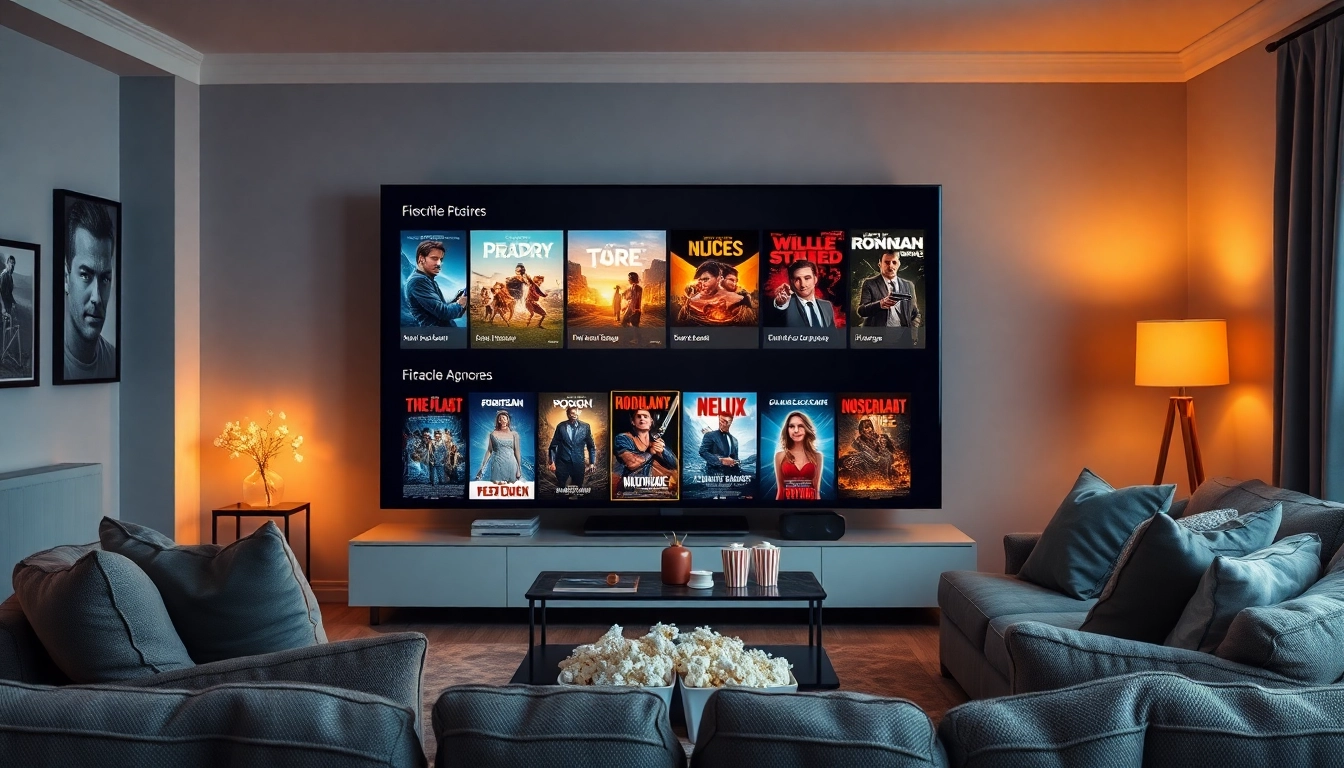Understanding Movie Reviews and Ratings
What Are Movie Reviews?
Movie reviews serve as analytical interpretations of films, offering insights into the storytelling, direction, performances, cinematography, and overall production quality. Unlike merely summarizing a film’s plot, a well-crafted review digs deep into the elements that contribute to the viewing experience. Reviews can originate from a variety of sources, such as professional film critics, independent bloggers, and audience members, often reflecting different perspectives on the same film. For readers looking to engage with cinema meaningfully, understanding both the critic’s viewpoint and the broader audience reaction can enhance their appreciation for film as an art form.
How Movie Ratings Work
Film ratings provide a quantitative measurement reflecting the perceived value of a movie, often captured through systems like the stars or numerical scores. Each rating source, like Movie reviews and ratings, employs slightly different criteria, adding complexity to how films are critiqued. For instance, the IMDb uses a straightforward 10-point scale based on user ratings, while Rotten Tomatoes offers a percentage score illustrating the proportion of critics who rated the film positively. Understanding how to interpret these ratings helps viewers make informed decisions on what to watch.
The Importance of Reviews and Ratings
Reviews and ratings provide guidance in a saturated cinema landscape. With countless films released annually, they serve as essential tools for navigation, assisting audiences in making choices aligned with their interests. Additionally, reviews impact movie marketing by shaping public perception prior to release dates. They can create buzz and build anticipation, influencing box office success or failure. In some cases, a negative review can lead to substantial losses for a film, while positive feedback can skyrocket it to unforeseen heights.
Where to Find Reliable Movie Reviews and Ratings
Top Online Sources for Movie Reviews
In an age where information is abundant, identifying reputable sources for movie reviews and ratings is paramount. Websites such as Rotten Tomatoes and IMDb stand out as established platforms, offering both critic aggregates and user feedback. Each platform has its unique strengths: Rotten Tomatoes excels with its Tomatometer, visually depicting the proportion of positive reviews, while IMDb provides extensive databases of films, user reviews, and ratings. Other notable mentions include Roger Ebert’s website for expert critiques and Common Sense Media for family-oriented evaluations.
Using Ratings from Trusted Websites
Choosing to consult reviews from reputable websites ensures access to insightful and credible information. Trusted websites employ professional critics who often possess canonical knowledge of filmmaking history and technique. Ratings on these platforms reflect the consensus of these experts and provide a balanced viewpoint on a film’s strengths and weaknesses. However, viewers should also keep in mind that personal preferences play a significant role, and a film rated poorly by critics might still resonate deeply with individual tastes.
Integrating User Reviews and Feedback
User reviews provide a fresh take and the collective voice of audiences who might be different from critics. Platforms like IMDb and Rotten Tomatoes allow users to leave their own ratings and feedback, enriching the overall picture. Integrating these opinions with professional reviews allows for a more rounded perspective. Potential biases sown through lack of professional insight may also be challenged through these varied interpretations, presenting a fuller understanding of the film’s impact.
How to Write a Great Movie Review
Structuring Your Review
A well-structured movie review is essential for conveying thoughts and engaging readers. Generally, a strong review includes the following basic structure:
- Introduction: Provide brief context about the film, including title, director, and genre.
- Thesis Statement: Present your overall impression or argument in a clear sentence.
- Body: Discuss specific elements like performances, direction, writing, and cinematography, illustrating each point with examples. Each paragraph should ideally focus on a single aspect.
- Conclusion: Summarize your insights and state whether you would recommend the film and why.
Key Elements to Include
When crafting your review, consider highlighting the following critical elements:
- Plot Overview: Introduce the premise without revealing spoilers.
- Character Analysis: Discuss performances and character development.
- Cinematography and Soundtrack: Evaluate how technical choices elevate the story.
- Emotional Impact: Share how the film resonated with you on a personal level.
- Comparison: Relate the film to others in the same genre or by the same director.
Sharing Your Review on Social Platforms
Once your review is written, sharing it on social platforms such as Twitter, Facebook, or film-specific communities like Letterboxd can broaden its reach. Engaging with other cinephiles will not only spark discussions but may also lead to valuable feedback on your writing. These platforms serve as a vibrant arena for exchanging opinions and recommendations, fostering a sense of community among movie lovers.
Impact of Movie Reviews and Ratings on Audiences
How Ratings Influence Viewer’s Choices
Ratings profoundly affect a viewer’s choice in selecting films. Many audiences rely on aggregates like Rotten Tomatoes’ scores to quickly judge whether a film is worth watching. For instance, a score above 70% might signal a quality experience, while a lower rating could lead viewers to reconsider. Studies have shown that high ratings influence not only the decisions of casual viewers but also of the empowered fanbases of certain genres who gravitate towards critically acclaimed titles.
Reviews and Their Effect on Movie Marketing
Film marketing strategies increasingly rely on leveraging reviews and ratings. Anticipatory audiences engage with early reviews to determine if a movie aligns with their expectations. A common practice includes releasing advanced screenings or critic reviews to generate buzz ahead of a film’s launch. Additionally, quotes from glowing reviews are often featured in promotional materials, enhancing a film’s credibility and appeal. As a result, movies with positive reviews tend to perform better at the box office, making reviews a crucial factor in marketing.
Cultural Significance of Film Critiques
Film critiques carry cultural weight by stimulating discussions around social issues, artistic expression, and industry standards. They do more than evaluate quality; they analyze the themes and societal narratives films propagate. Critiques challenge media consumption, encouraging viewers to think critically about the content they absorb. Reviews not only provide a lens through which to examine film but also cultivate awareness regarding representation, diversity, and cultural relevance within cinema.
Trends in Movie Reviews and Ratings
The Rise of Video Reviews
Video reviews have become increasingly popular in recent years, offering dynamic and engaging content that caters to various viewer preferences. Platforms such as YouTube host a plethora of film critics who utilize visual and auditory elements to create memorable and entertaining reviews. This format allows for nuanced discussions interspersed with clips and memes that resonate with viewers more than traditional written reviews might.
Social Media’s Role in Film Critiques
The advent of social media has transformed the way movies are reviewed and consumed. Twitter, Instagram, and TikTok provide platforms for immediate reactions, allowing users to share their thoughts instantly. Hashtags such as #MovieReviews or #FilmTwitter have emerged, enabling users to track discussions and participate in debates. The real-time feedback offers filmmakers insights into viewer perceptions and reactions, while audiences benefit from diverse opinions that paint a comprehensive picture of a film’s impact.
Comparison of Traditional vs. Modern Review Methods
Traditional movie reviews often leaned heavily on expert opinions presented in print or broadcast media. However, the rise of modern review methodologies has seen an increase in democratic participation, where audience voices gain equal weight. Today, crowdsourced ratings often carry as much weight as professional critiques, creating a more heterogeneous landscape. While traditional critiques provide thorough analysis, modern methods allow for immediacy and diversity, showcasing a range of perspectives in real-time.















Leave a Reply